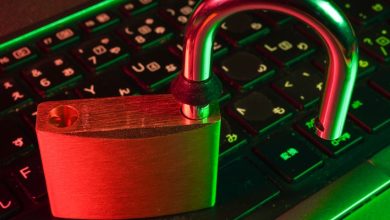How to Keep Your Crypto Software Updated for Security

- Understanding the Importance of Regular Updates
- Common Security Risks of Outdated Crypto Software
- Best Practices for Keeping Your Crypto Software Updated
- Automating the Update Process for Efficiency
- Ensuring Compatibility with the Latest Security Protocols
- The Role of Patch Management in Crypto Software Security
Understanding the Importance of Regular Updates
Regularly updating your crypto software is crucial for maintaining the security and functionality of your digital assets. By regularly updating your software, you can ensure that you have the latest security patches and bug fixes installed, reducing the risk of potential vulnerabilities being exploited by malicious actors.
Updates also often include new features and improvements that can enhance the overall performance of your crypto software, making it more efficient and user-friendly. Ignoring updates can leave your software outdated and more susceptible to security breaches, putting your assets at risk.
In addition to security and performance benefits, staying up to date with software updates is essential for ensuring compatibility with other applications and services. Developers frequently release updates to ensure that their software remains compatible with the latest technologies and protocols, so failing to update your crypto software can lead to compatibility issues that may disrupt your operations.
Overall, regular updates are a critical part of maintaining the security, performance, and compatibility of your crypto software. By making it a priority to keep your software updated, you can protect your assets and ensure that your operations run smoothly and securely.
Common Security Risks of Outdated Crypto Software
Using outdated crypto software can expose your digital assets to a variety of security risks. One of the most common risks is the presence of vulnerabilities that have been identified and patched in newer versions of the software. Hackers are constantly looking for these vulnerabilities to exploit them and gain unauthorized access to your crypto assets.
Another security risk of running outdated crypto software is the lack of compatibility with the latest security protocols and algorithms. This can make your transactions more susceptible to interception and manipulation by malicious actors. Additionally, outdated software may not have the latest security features, such as multi-factor authentication, making it easier for attackers to compromise your accounts.
Furthermore, using outdated crypto software can also make you a target for cryptojacking, where hackers use your computing resources to mine cryptocurrency without your consent. This can slow down your system, increase your electricity bills, and potentially damage your hardware over time.
To mitigate these security risks, it is crucial to keep your crypto software up to date by regularly installing updates and patches provided by the developers. By staying current with the latest versions of the software, you can ensure that your digital assets are protected against known vulnerabilities and threats in the ever-evolving landscape of cyber security.
Best Practices for Keeping Your Crypto Software Updated
One of the most crucial aspects of maintaining the security of your cryptocurrency software is to ensure that it is regularly updated. By keeping your software up to date, you can protect your assets from potential security vulnerabilities and ensure that you are leveraging the latest features and improvements.
To follow best practices for keeping your crypto software updated, it is important to regularly check for updates from the software provider. Many cryptocurrency wallets and exchanges release updates to address security issues or to enhance the user experience. By staying informed about these updates, you can ensure that your software is always running the latest version.
In addition to checking for updates, it is essential to follow the recommended update process provided by the software provider. This may involve downloading a new version of the software, installing updates, or implementing patches. By following these instructions carefully, you can avoid any potential issues that may arise from improperly updating your software.
Furthermore, it is recommended to back up your data before updating your cryptocurrency software. While updates are designed to improve security and functionality, there is always a risk of data loss during the update process. By backing up your data regularly, you can ensure that you can restore your information in case of any unforeseen issues during the update.
Overall, by following these best practices for keeping your crypto software updated, you can enhance the security of your assets and stay ahead of potential threats. Regular updates are a critical component of maintaining the integrity of your cryptocurrency software and protecting your investments in the long run.
Automating the Update Process for Efficiency
Automating the update process is crucial for maintaining the security and efficiency of your crypto software. By setting up automated updates, you can ensure that your software is always running on the latest version with the most up-to-date security patches. This helps to protect your assets and data from potential threats and vulnerabilities.
One way to automate the update process is to schedule regular checks for updates and automatically download and install them when available. This can be done using built-in update features within the software or by using third-party tools that specialize in automating software updates. By automating this process, you can save time and effort that would otherwise be spent manually checking for updates and installing them.
Another benefit of automating the update process is that it reduces the risk of human error. Manually updating software can be a tedious and time-consuming task, which increases the likelihood of mistakes being made. Automated updates eliminate the need for manual intervention, reducing the chances of errors that could potentially compromise the security of your crypto software.
Overall, automating the update process for your crypto software is essential for maintaining security and efficiency. By setting up automated updates, you can ensure that your software is always running on the latest version with the most up-to-date security patches, while also saving time and reducing the risk of human error.
Ensuring Compatibility with the Latest Security Protocols
Ensuring compatibility with the latest security protocols is crucial in keeping your crypto software updated and secure. It is essential to regularly check for updates and patches to ensure that your software is equipped to handle any potential security threats.
One way to ensure compatibility with the latest security protocols is to stay informed about the latest developments in the crypto industry. By staying up to date with industry news and trends, you can stay ahead of potential security risks and vulnerabilities.
Another important step is to regularly review and update your software’s security settings. This includes implementing multi-factor authentication, encryption, and other security measures to protect your assets and data.
Additionally, it is recommended to work with reputable security experts and consultants to assess your software’s security posture and identify any potential vulnerabilities. By conducting regular security audits, you can proactively address any weaknesses in your system and prevent security breaches.
Overall, ensuring compatibility with the latest security protocols is essential in keeping your crypto software updated and secure. By staying informed, updating security settings, and working with security experts, you can protect your assets and data from potential threats in the ever-evolving crypto landscape.
The Role of Patch Management in Crypto Software Security
One crucial aspect of maintaining security in crypto software is patch management. Patch management involves regularly updating software to fix vulnerabilities and improve overall security. By staying on top of patch updates, users can ensure that their crypto software remains protected against potential threats.
Failure to keep up with patch management can leave crypto software vulnerable to attacks, as hackers often target known security flaws in outdated software. By neglecting to update regularly, users are essentially leaving the door open for malicious actors to exploit weaknesses in the system.
It is essential for users to prioritize patch management as part of their overall security strategy. By regularly checking for updates and promptly installing them, users can mitigate the risk of security breaches and protect their assets from unauthorized access.



